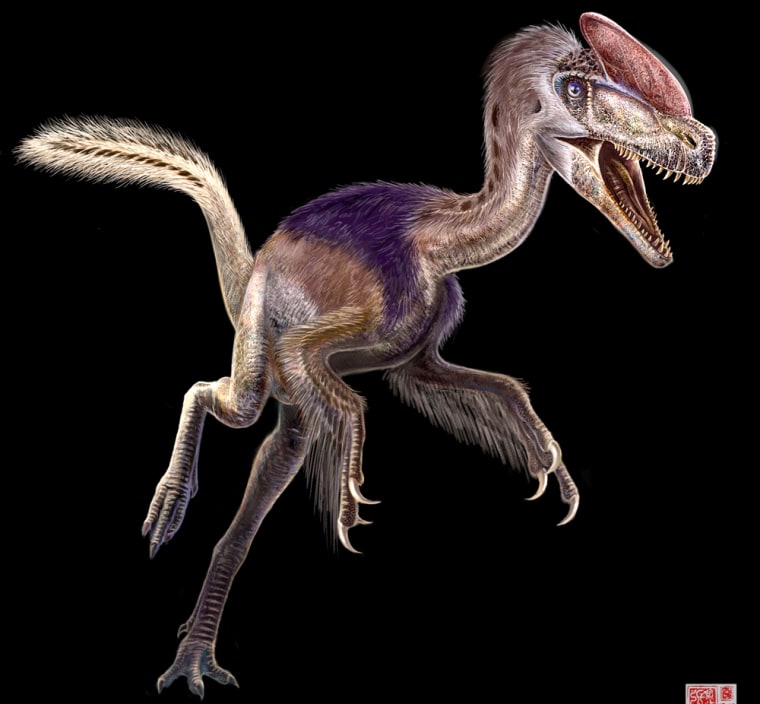Paleontologists have unearthed two fossilized dinosaurs believed to be the oldest ancestors of the tyrannosaur family, researchers announced Wednesday.
The new species had cranial crests and were likely covered in feathers, but were only a third the size of their famous cousin, Tyrannosaurus rex.
Still, the discovery sets back the clock on the tyrannosaur family by at least 30 million years.
This study is detailed in Thursday's issue of the journal Nature.
A ‘crowned dragon'
Two of the new tyrannosaurs, named Guanlong wucaii, a derivation of the Mandarin word for "crowned dragon," were discovered in the Junggar Basin in northwestern China.
The adult specimen, which was 12 years old when it died, was about 9 feet (3 meters) long and 6 or 7 feet (2 meters) tall. A smaller 6-year-old juvenile was found nearby.
Both lived around 160 million years ago during the early Cretaceous period. The previous record-holder for oldest tyrannosaur was the 130-million-year-old Dilong paradoxous, recently discovered in China by the same researchers.
By comparison, T. rex, which measured about 40 feet (12 meters) long and 15 feet (4.5 meters) tall, stomped around the Earth during the last stage of the Cretaceous period about 65 million years ago.
G. wucaii sported a 2.5-inch-tall (6-centimeter-tall) head crest just a few millimeters thick and filled with air sacs. Scientists say it was comparable to the ornamental features on some living birds, such as cassowaries and hornbills. However, like the crest on duck-billed lambeosaurs, scientists can't say for sure what its purpose was.
"I don't think it would have helped in a fight very much," said co-author Mark Norell of the American Museum of Natural History in New York. "It's very thin and fragile."
Instead, it was more likely used to attract mates or for species identification.
First of its kind
Using mathematical analysis, researchers compared the front teeth, skull and pelvic features of G. wucaii to other dinosaurs of the time. Although the creature was closely related to coelurosaurs, the researchers determined it was the most primitive tyrannosaur known, making it the lowest known branch on the family tree.

"Guanlong shows us how the small coelurosaurian ancestors of tyrannosaurs took the first step that led to the giant T. rex almost 100 million years later," said study co-author James Clark of George Washington University.
Although G. wucaii's skeletal features are very similar to later tyrannosaurs, it had three fingers, instead of the two found on most advanced tyrannosaurs. Also, it was likely as feathered as a chicken.
"We previously discovered another closely related primitive tyrannosaur, called Dilong paradoxus, that is famous for its feathers," Norell said. "Because they're so closely related, there's no reason at all to think it didn't have feathers."
